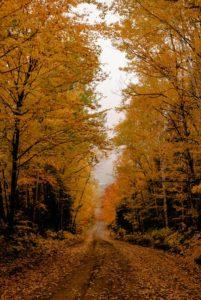One of the best parts of spring is the blooming of trees, and these renewed colours are the perfect antidote for the winter blues. In Ontario, spring-blooming species begin “waking up” anywhere from mid-March through to about mid-June. Which species can you expect to see bloom first this spring?
How Do Trees Know When To Bloom?
The first blooms come out due to two major conditions. Trees will wake up when they notice consistently warmer, moister soil after the cold winter stretch. The second condition is the duration of  daylight, as trees react to more sun exposure. The longer spring days trigger the buds that will turn into blooms.
daylight, as trees react to more sun exposure. The longer spring days trigger the buds that will turn into blooms.
All this means that a late spring can delay the colours of even the earliest budding trees. London and its surrounding region are in Zones 6a and 6b. Trees here have to contend with winters that dip between -18 to -23 degrees Celsius; while this is chilly for even the hardiest Canadians, many trees have evolved to thrive in this kind of cold. One of the deciduous trees (leafy, as opposed to coniferous trees like pine and evergreen) you see bud earliest is suited to our area: the red maple.
Acer rubrum – The Red Maple
In Ontario, one of the first trees to bloom is, fittingly enough, the red maple. Despite the symbolic resonance for Canadians, the Acer rubrum is the most common tree in eastern North America, and they add a blush of red to the spring greenery. Because it releases plenty of nectar and pollen, the red maple is great for the spring pollinators like bees!
The first sign of flowers on the red maple is the tight, dark red buds grouped in clusters on small shoots stemming from the previous year’s twigs. This adds a nice bit of red to the twigs before they fully bloom, which happens later in the season. As the buds expand, the flowers become exposed and the canopy takes on a subtle colour before any leaves begin to unfurl.
What Happens When Trees Wake Up?
 Trees survive the cold Canadian winters by going dormant, shutting down the creation and passage of nutrients and filling their membranes with a natural “antifreeze.” But even in their slumber, trees are well-attuned to the temperature and moisture of the soil, as well as the amount of daylight. You start seeing red maple buds before anything else – or magnolia and cherry tree blossoms, two other favourite trees that come out early – because it’s one of the more sensitive species to the signs in the soil and light.
Trees survive the cold Canadian winters by going dormant, shutting down the creation and passage of nutrients and filling their membranes with a natural “antifreeze.” But even in their slumber, trees are well-attuned to the temperature and moisture of the soil, as well as the amount of daylight. You start seeing red maple buds before anything else – or magnolia and cherry tree blossoms, two other favourite trees that come out early – because it’s one of the more sensitive species to the signs in the soil and light.
When the sun warms the soil, the trees know that it’s time to change their chemistry and shift hormone production toward growth. Roots take the water from the defrosted and moist soil, sending it up the tree’s trunk and through to its twigs. The buds and blossoms come out and unfold as they plump up, and you start to see the first signs of life!

